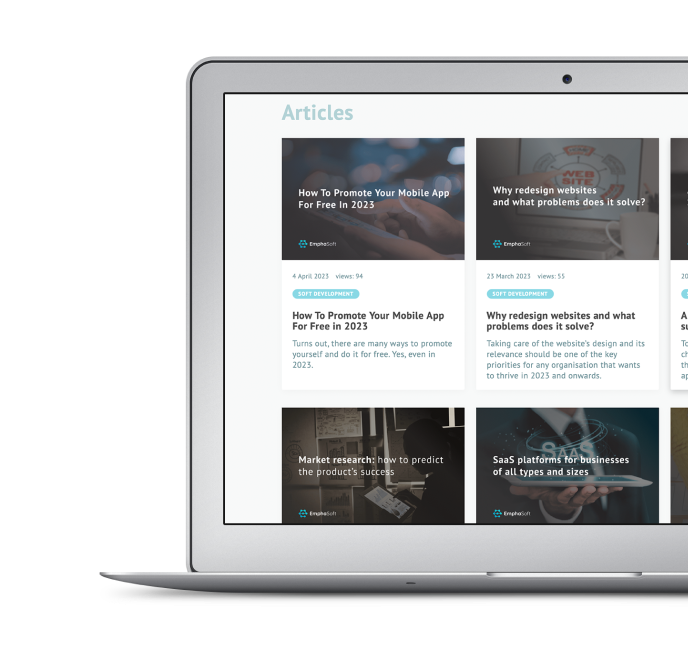Some innovative ideas may not fit into the market. Hardly any successful app startup knows what users want until they sample. Thus, the MVP process allowed them to test the product, receive reviews and criticisms, iterate on feedback, and build a finer product. MVP is a minimum viable product, a limited version of an app released to test the market and assess the product's receptiveness.
What Is A Minimum Viable Product (MVP)?
What Does MVP Mean In Software Development
In software development, An MVP is an app created to validate a product idea. It has required – not maximum – features that make the app functional.
MVP helps developers release products quickly to early adopters and get their feedback, facilitating software creation more channeled to user demands upon full-fledged launch.
What Is MVP In Business?
MVP business meaning is similar. It is a low version of a product or service made to validate a whole business idea.
In a book, The Lean Startup, Eric Reis underscored the need for an MVP "The Minimum Viable Product is that version of a new product which allows a team to collect the maximum amount of validated learning about customers with the least effort."
It's worth knowing that an MVP isn't a product with dodgy interfaces, half-built tools, and features. It must be created to fulfill cogent user needs at the lowest cost possible.
Finally, a fine line exists between an MVP, a prototype, or a Proof of concept. A prototype is a graphical representation of an app. It shows the physical appearance of an app.
On the other hand, a PoC is created and used to test an app's technical feasibility. It's meant to be used in-house to guide development. In comparison, MVP is a complete software for users, albeit with less-than-expected features.
An MVP is the most basic and raw product version to be shipped to clients. It is common among technical startups and is used to test the waters and see the initial public reaction to the product.
Many of those technical startup MVPs evolved into household names. Companies such as Uber and Dropbox are among the big names that followed the MVP route to becoming world-known companies.
The Types of MVPs
Sometimes an MVP isn’t much about the product but something simpler, such as a landing page with a lead magnet. The purpose of such MVPs is to get a feeling of how many people are interested in the potential product and to verify the main business idea.
Eric Ries, the author of the Lean Startup bestseller, has identified six different types of MVPs that startups can use to prove their idea:
- The Functioning Prototype is a basic but working version of the product that potential clients can interact with.
- Landing Page MVP is a landing page made to see how many people would be willing to purchase by clicking buttons or leaving their contact information.
- Video MVP creates no genuine product but an explainer video showing how the solution will work.
- The Concierge MVP means manual servicing to one client who needs to be satisfied. It’s not scalable but is used to prove the business case.
- The Wizard of Oz MVP makes clients think they use the actual product, but it’s just a facade behind which everything’s done manually. An example is a web page that looks like an online bookstore website, but human labor does everything on the backend with no automation.
- Crowdfunding MVPs are great because you get the ultimate idea validation - customers’ payments. Platforms like Kickstarter allow startup MVPs to present their product and obtain substantial financial support upfront if it becomes popular.
MVP Process: Step By Step Development Guide
Align Your Business Goals With The MVP Product
What are your company's goals? Do you want to access a particular market, grow revenue, or let customers know your product exists? Your business model determines your MVP goals, which also determine the features you prioritize.
For instance, a clothing line might create a software MVP to access new customers in a different region. For an SEO startup, MVP software development might be used to introduce innovative features and draw customers from competitors.
Conduct Comprehensive Market And Competitor Analysis.
Even if an MVP product aligns with your business model, does it fit the market needs? Your MVP software design is only functional if it aligns with people's preferences.
Thus, conduct different surveys to identify the target audience's pain points, align them with your solution, and find common ground. This will ensure the development of an MVP tailored to user demands and reduce the propensity for mistakes.
Besides, you also have to know the position of your competitors. Learn about their activities, marketing, product, pricing structure, and strengths and weaknesses. Thus, during the MVP product management, you'd know what will work better among targeting a new market, introducing innovative features or strategy, or wrestling it out with the competitor. You also identify whether the product is optimal for a lean startup MVP.
Connect The Stakeholders In Your Business Ecosystem
Create a map involving every actor in your business and how they'd use the MVP for the end goal. In a clothing line, stakeholders can include the cloth store, customers, sales agents, payment partners, delivery agents, etc.
Such maps connect these stakeholders and define their value in the chain and how the product reaches the end user.
Identify The Value Proposition For Every Participant
Everyone using the software MVP must derive an incentive. Thus, after identifying the role of each stakeholder, examine what benefit they will gain and what to trade to enjoy such use. Create a pain-gain balance.
Here is a quick checklist:
- What cogent problem does each stakeholder face in the ecosystem
- What are they willing to trade to solve such a problem?
- What's the benefit and ROI of solving such a problem for the company?
- What's the most significant user pain, and how will the MVP solve it?
- What additional value will the software add?
By identifying the value proposition, you should know which feature to prioritize or whether the functionality is worth the time and cost commitment.
Create And Test Your MVP Software Development
Remember that your final MVP contains the essential features that solve problems and provide value to each stakeholder. While you'd identify many features, only incorporate a few necessary details indispensable to the app's smooth running.
Moreso, you must also determine the performance metrics for your startup MVP. On what grounds will it be regarded as a success or failure? Make assumptions and hypotheses and identify potential points of failure or success.
Hence, once the MVP app gets completed, you can compare the app's performance against the metrics. It also helps you compare assumptions with outcomes and identify unforeseen hitches and solutions.
Purpose And Goal of MVP Development
To Attract Investors
Let's say you're an investor. You'd be more willing to put your money on a working solution that needs improving than just an app idea on paper.
Investors want evidence, and only an MVP can provide that at a low cost. Take Dropbox as an example. Its developers had to make an explainer video MVP and get enough people on their waitlist before investors believed and funded their project.
To Whet Your Customer's Appetite Ahead of Product Release
MVP is the ultimate customer magnet. Here are the different ways to establish them with MVP:
- MVP gets you the first set of customers. Especially for a trend-setting solution, you get the first-ever set of adopters and build a market base quickly.
Hence, you can beat potential competitors to market time and establish your brand as a niche mainstay.
- Feedback: Users will also give you valuable feedback on your product. Market research can only do so much to identify customer pain points. But by sampling your product, you'd get more insights, statistics and underlying reasons from users.
You get suggestions regularly, release a new version, tweak features, and erase bugs. In the process, you establish a trusted and transparent relationship with users. Upon full-fledged launch, you have enough customers to use your product.
- Experimenting Your Monetization Model: It also lets you sample the best money-generation model. Will users pay for the app? If yes, how much? What is the best way to charge them? Should you implement a freemium, in-app purchases or subscription model?
An MVP gets you every answer to your app monetization strategy.
- Get Enough People On Waitlist: Upon full launch, waitlists are a great way to jumpstart your app journey. An MVP whet the appetite of many for your product. Once the full version launches, they become users immediately.
To Minimize Development Costs
It's worth knowing that a complex app startup requires a significant investment. You'd have to pay extra for every additional feature, seamless integration and beautiful design. But MVP doesn't require that.
Here, you're only prioritizing only the required features. Hence, you spend less on development and testing.
To Reduce Risk While Maintaining Stability
A fully developed application is a risk, to say the least. Its completion has taken lots of time, money and human resources.
Sometimes, your app might be built to capitalize on a new trend, a just-made government policy, or exploit resources. Such situations have an air of unpredictability. It might change or cease to exist over time. For your app, that's wasting colossal money and resources spent.
But with a startup MVP, you minimize the scope of risk because the MVP software design uses little resources, let the app idea mature over time and capitalize on new development as they occur. An MVP scrum model saves resources while setting up the app for stable long-term success.
Benefits of MVP In Software Development
The key benefit of an MVP is that it brings the solution to the client much faster than a traditional product management and development process would. A full product can take years to develop, whereas an MVP software design can be ready after a couple of months (sometimes weeks) of work.
Such a quick rollout allows for identifying advantages and pain points early in the game when the cost of changing something or redoing a feature from scratch is low.
Startups are usually short on resources and have limited time as they rush to be the first ones to roll out innovation on the market. The MVP scrum model works best for them - they spend the least effort possible while getting invaluable customer feedback.
MVPs fit well with another popular concept - Agile and Scrum software development. The Agile process is all about innovation, constant learning, and improvement. Meanwhile, using MVP scrum within Agile promotes shorter new product development cycles with more frequent releases.
Once the MVP product is out, the startup collects feedback and decides on the next iteration. If the test results are not so good and the clients don’t love the product, the company can quickly pivot and reinvent its new product development process without substantial waste.
MVP Alternatives
Software development MVP strategy has several look-alikes and alternative options. Let’s look into some of them.
Minimum Lovable Product (MLP)
MVP is, by its nature, a raw product that only offers the bare minimum to the client. As a result, while it does function, it isn't necessarily something customers will rave about.
An MLP takes an extra step and makes the product not just bearable but actually lovable.
It might seem excessive to the MVP adopters, but there is a known issue: some clients choose an alternative if the first edition appears too basic. They appreciate that later, more feature-rich versions are coming in the future but have no time or desire to wait and see how it turns out. An MLP solves that issue.
Minimum Marketable Product (MMP)
An MMP is a combination of an MVP and an MLP. It implies that founders understand their target audience well and how the product solves their problems. An MMP includes a set of features that can be properly marketed and advertised.
Minimum Catchy Offer
Minimum Catchy Offer or an MCO is not necessarily a product that users can interact with but can be a catchy phrase that doesn’t exist yet but manages to catch our attention.
For example, an ad or website might describe an app that gives you access to over 1000 local restaurant delivery services by simply clicking two buttons. This piques users' curiosity even though there is not yet any work that’s been done toward making this app real.
Examples of Minimum Viable Products
Although less talked about, developing an MVP solution has been vital to the most successful app's incredible success. Facebook, Twitter, AirBnB, Mailchimp, and Dropbox, among others, succeeded in starting as a minimum viable product.
Let's examine their MVP journey.
Uber
When Uber launched in 2009, it was just a San Francisco-based ride-sharing service that helped book cabs through SMS messages. Then, an MVP was used to test whether there's a market for such a service, albeit at low risk. Today, Uber operates in over 10,500 cities worldwide, valued at $61.72 Billion.
Airbnb
Airbnb had little cash to establish its online short-term renting services when starting. They offered their apartment to test the concept, created a minimal landing page, posted pictures of the property, and invited people for short-term rent. For an idea that started with a flat, Airbnb has 100,000 cities in its listing today. The company is worth $73.65 Billion.
Many of us can relate to the success of Facebook today. But we hardly know that it started as an MVP for students of Harvard University. Then, Mark Zuckerberg, a student, created Facebook as a messaging platform amongst students in Havard. Today, it's arguably the most used social media platform worldwide.
Amazon
Jeff Bezos started Amazon to sell books. Then, he visualized having the biggest bookstore in the world. Bezos' initial app had a manual backend. Upon making orders, he'd buy the book from a bookstore and ship it to the customer. 2 years later; Amazon became a public company. But that was just the beginning of the story.
By listening to user feedback and making iterations, Amazon improved its MVP solution. Gradually, it started listing other products. Today, it's one of the biggest retail stores worldwide, boosting a presence across five continents.
Building Your MVP At Emphasoft
Emphasoft is a software agency that provides MVP development for startups. We help you actualize your concept and gather valuable user insights. We are an exclusive software development company with vast experience building quality software solutions for businesses and startups.
Once you submit your app concept, we will conduct market research and analyze its technical feasibility. We incorporate the MVP process into the project management to test the waters and get you feedback on your product. With reviews and valuable insights from our experts, you will surely get a functional and highly usable app upon full launch.
Emphasoft is just a call away.
Read next:
Staff Augmentation VS Outsourcing a Dedicated Team
Tips for making your mobile app stay successful and fresh








